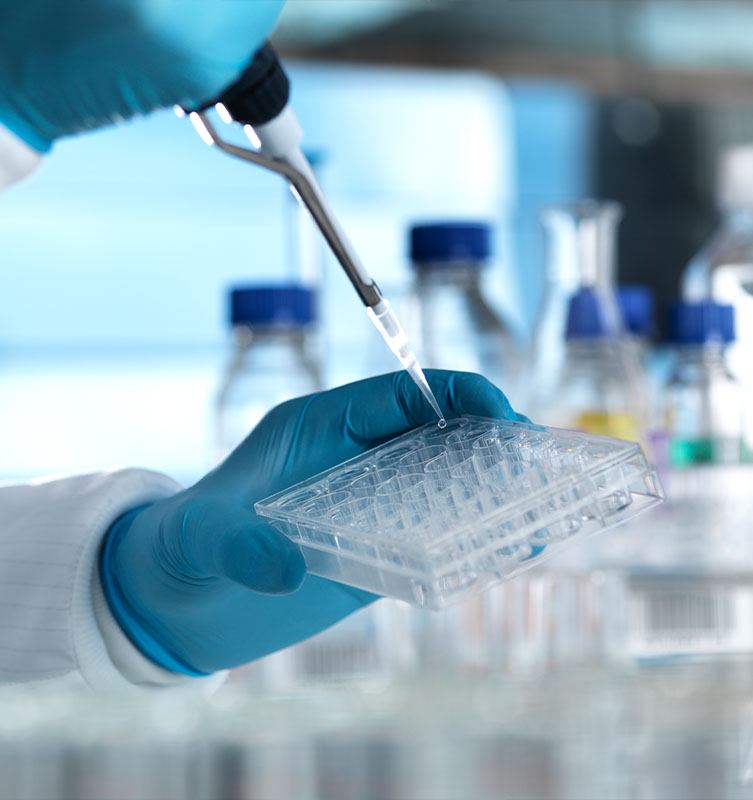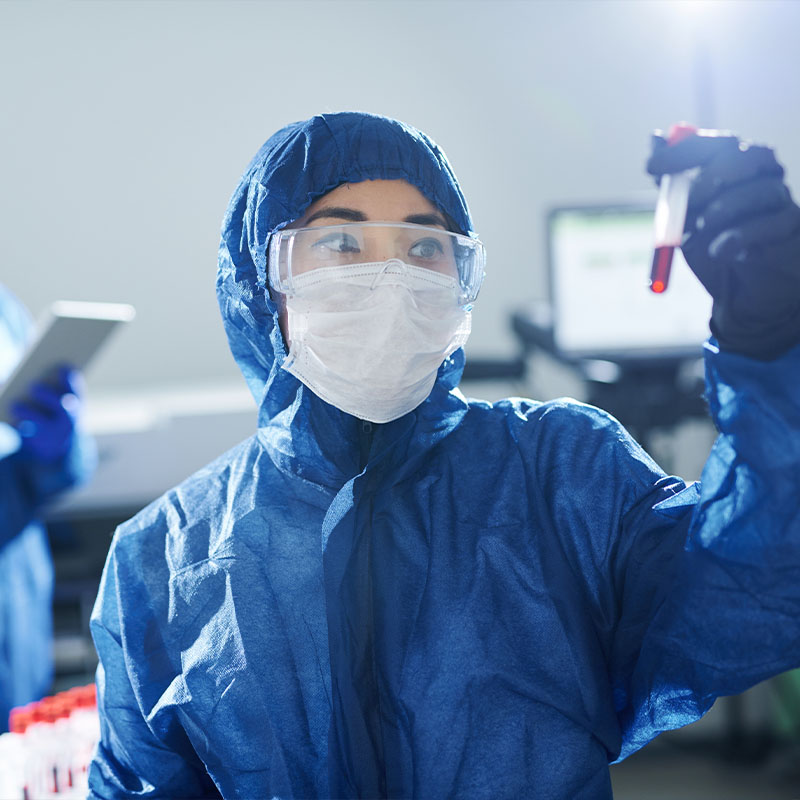
FUNDAMENTALS AND TECHNOLOGY
OUR SECTORS OF ACTIVITY




PCR (Polymerase Chain Reaction)
It is an advanced scientific technique that was invented by the American biochemist Kary Mullis in 1985.
It is the enzymatic amplification of a fragment of interest (DNA) located between two oligonucleotides (primers). It allows to generate unlimited quantities of a sequence of interest.
The equipment consists of a thermocycler and a fluorescence reader, attached to a data collection equipment (computer).
Traditionally, the problem with this technique has been the differentiation of viable and dead cells. To solve this problem Eurolab works with a detection system with ethidium monoazide (EMA), known as vPCR, which allows to quantify only viable cells.
The main advantage of this technique is speed. Sample collection takes 5 minutes and analysis takes about 6 hours, compared to 48 hours for a preliminary result on agar plate and 5 days for a definitive result. Healthcare professionals know the waste of money involved in closing an operating room for an entire day, which is why they prefer this technique to agar plates. In addition, since it has a very low detection limit, it serves to correct false negatives. That is, it is possible that we do not see colonies on the agar plates but we can see DNA of pathogenic microorganisms in the same sample analyzed by the vPCR technique.
CONCLUSIONS
If your routine analyses by SAS impactor and plate incubation are indicative of environmental contamination or the Services of any specialty report cases of nosocomial infection…
…we can help you out of doubts and in an extremely fast way.
Our hospital biosafety services greatly reduce the closing times of operating rooms, ICUs or immunocompromised or infectious rooms.
It is no longer necessary to wait 5 days for confirmation of incubated cultures, euroLAB gives you the result on the same day with almost 100% sensitivity and specificity by using our laboratory and its qPCR equipment and specific taqman probes.
In addition, since it has a very low detection limit, it serves to correct false negatives.
That is, it is possible that we do not see colonies on the agar plates but we can see DNA of pathogenic microorganisms in the same sample analyzed by the vPCR technique.






